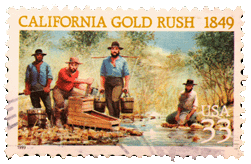
| 
|

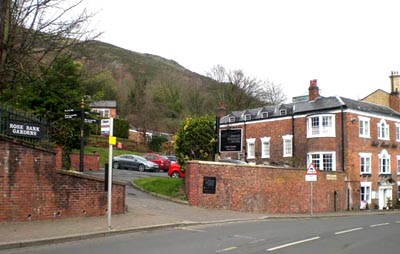
Friends Newsletter No. 42
May 2012


The Gateway project is being developed in conjunction with the Malvern Hills District Council scheme Route to the Hills. The launch walk is part of the Civic Week celebrations in Malvern. This event is sponsored by the Mount Pleasant Hotel.
In the picture - The Mount Pleasant, ideally located as the Gateway to the Hills.
For further information go to www.malvernwaters.co.uk and keyword search for 'Gateway'
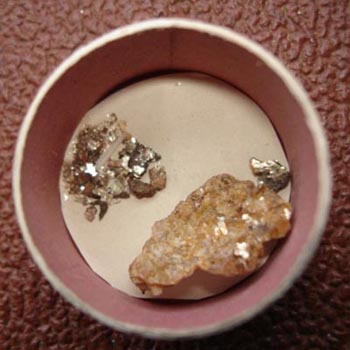
The question arises is there winnable gold in the Malvern Hills? Were these early prospectors deceived by the glittering mica in the rocks? The belief of gold in the Malvern Hills was supposedly disproved in the 19th century; albeit the rumour of gold being found in small quantities perpetuates. PIcture - California Gold Rush stamp - could this have been a similar scene to The Purlieu, West Malvern?
However the story now has a 21st century twist. In our exploration of the springs and wells for Celebrated Springs of the Malvern Hills we noted what is generally described as a well shaft in the woods on the northern side of the Purlieu. The picture on our web site shows the shaft near the Limekilns. The logic for digging a well at this point does not stand up to scrutiny because there is much more easily obtainable water nearby. Comparison with other similar sites elsewhere suggests that the shaft is possibly an old mine, with the formerly buried covering, now rotted and collapsed. The proximity to the legendary gold workings prompts the hypothesis that this may be a gold mine.
During the days of the gold rushes, both in the United States and in Australia, the last thing you did was tell anyone when you struck gold. Not only did it attract speculative prospectors, it also attracted thieves, rogues and vagabonds all out to cash in on easy pickings, not to mention the opium dens and bordellos. Also in the case of Malvern, the lord of the manor or the Crown may demand the mineral rights dues. Was West Malvern on the verge of becoming a gold rush town in the 19th century? Only the dispelling of the belief or perhaps a wall of silence, concerning possible gold deposits prompted economic activity to be focussed on other commercial enterprises such as Malvern Waters and the Water Cure and of course general stone quarrying.
There has understandably been a lack of hard evidence over the centuries about the existence of Malvern gold; that is up until now. Pursuing investigations further we have now actually acquired samples of supposedly natural Malvern gold dating from the 19th century. These samples are being investigated further. This new evidence will be vital in establishing the credibility of the legend of gold in them thar 'ills.
For many more details go into www.malvernwaters.co.uk and keyword search for 'Gold Mine' or click on the stamp above..
Shepherd's Well - Fitzjohn's Avenue, Hampstead (TQ 2662 8524)
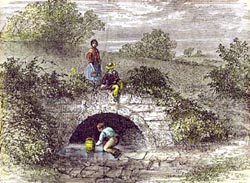 The picture turns out to be in Hampstead, London and in use during the first half of the 19th century. The Shepherd's well, also known as The Conduit, provided a source of good quality soft drinking water for the residents of Hampstead. The walk to the nearest road meant that water carriers sold water by the pail or two pails because of the yoke needed for carrying the water. The spring never froze and only very rarely ran dry. A plaque on the corner of Fitzjohn's Avenue and Lyndhurst Road marks the position of the well or close to it as its exact position is in the middle of the road. The last of the water-carriers died an inmate of the workhouse at New End about 1868. (See: Foord A S. 1910 Springs, Streams and Spas of London, pub. Fisher Unwin. p.151.) Perhaps Malvern residents will all be resorting to buckets of water soon in the light of the apparent water shortages!
The picture turns out to be in Hampstead, London and in use during the first half of the 19th century. The Shepherd's well, also known as The Conduit, provided a source of good quality soft drinking water for the residents of Hampstead. The walk to the nearest road meant that water carriers sold water by the pail or two pails because of the yoke needed for carrying the water. The spring never froze and only very rarely ran dry. A plaque on the corner of Fitzjohn's Avenue and Lyndhurst Road marks the position of the well or close to it as its exact position is in the middle of the road. The last of the water-carriers died an inmate of the workhouse at New End about 1868. (See: Foord A S. 1910 Springs, Streams and Spas of London, pub. Fisher Unwin. p.151.) Perhaps Malvern residents will all be resorting to buckets of water soon in the light of the apparent water shortages!
A modern day reminder can be seen by going to http://www.flickr.com/photos/tetramesh/6260473338/
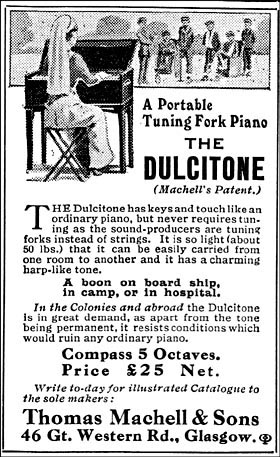
In this picture from Punch in 1917, the War Wounded are to be seen at the top listening to the dulcet tones which are generated by tuning forks rather than strings.
This advertisement for a Dulcitone was discovered in a copy of Punch dated 3 October 1917. The Dulcitone is like a piano, except that it sounds like a harp and has tuning forks instead of strings. This means that the instrument never needs tuning. Another advantage is its weight, which at about 50lbs., means that it's easy to move from one place to another.
In 1967 Mr and Mrs Hull took over the tenancy of St Ann's Well. Visitor numbers had steadily declined with the disappearance of the donkeys at the start of the Second World War, and the proliferation in the 1960s of the motor car, which enabled people to travel further afield for their weekend amusement. In February 1971 Mr Hull asked for an organ to be installed at
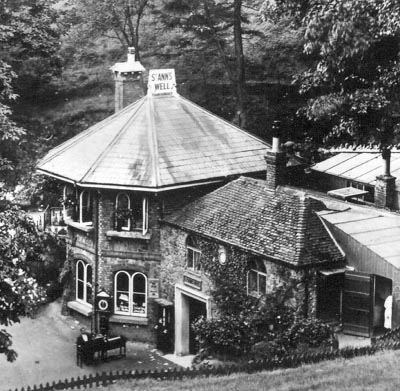 could be played there on Sunday afternoons and Bank Holidays. The Malvern Hills Conservators voted 13 to 1 against the proposal. That was in the days when Good Friday and Sundays were still special days - when shops closed and many people attended church. Times have changed; would the Conservators make the same decision today? Would today's tenant want organ music?
could be played there on Sunday afternoons and Bank Holidays. The Malvern Hills Conservators voted 13 to 1 against the proposal. That was in the days when Good Friday and Sundays were still special days - when shops closed and many people attended church. Times have changed; would the Conservators make the same decision today? Would today's tenant want organ music?
Some years ago Malvern Museum was presented with Blind George's Dulcitone. It is a piece of Malvern's bygone social heritage and can be seen upstairs in the Water Cure Room. Once or twice a year the keyboard springs into life for performances inside the museum or under the archway during the Heritage Weekends. This year that's 8th and 9th September. Come along and listen, and if you can play, ask to play.
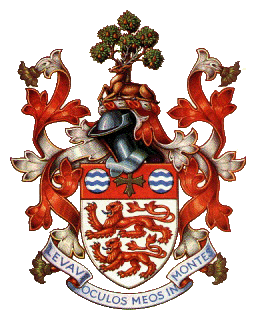
We were exploring the water symbols on the town arms and came up with some interesting information. The two red lions walking with forked tails are taken from the arms of the earls Beauchamp. The cross is taken from the arms of the ancient See of Westminster, suppressed in 1540, and alludes to the mediaeval connections between the priory of Great Malvern and Westminster Abbey, of which the priory was a cell. The two heraldic fountains flanking the cross indicate the Malvern waters. The stag, in natural colours, represents Malvern Chase. The pear tree in fruit has been adopted from the arms of Worcestershire County Council; it recalls the traditional pear tree re-planting ceremony at Worcester on a visit by Queen Elizabeth I.
And just in case you are wondering - the motto means 'I will lift up mine eyes unto the hills'.
The arms were originally granted in 1951.
 In the first 2012 issue of Newseum, Malvern Museum's newsletter, Paul Backhouse writes on the evidence that authenticates a religious establishment in Malvern before the Norman Conquest of 1066. The sources considered appear to have been Brian Smith's book (1964) and Victoria County History (c1901). Summarising Backhouse; Odda of Deerhurst had inherited land in the vicinity of Malvern from his father Aelfhere in 938 AD. Intending to restore the inherited land to religious establishments, he likely granted land to a new religious establishment in the Malverns. Odda died in 1056 and so Edward the Confessor took Odda's lands and bestowed them on a new religious foundation at Westminster Abbey. When Edward the Confessor died, his wife Edith retained an interest in the lands until her death in 1075. Thereafter Westminster could take full control of its lands in Worcestershire, including the new religious establishment.
In the first 2012 issue of Newseum, Malvern Museum's newsletter, Paul Backhouse writes on the evidence that authenticates a religious establishment in Malvern before the Norman Conquest of 1066. The sources considered appear to have been Brian Smith's book (1964) and Victoria County History (c1901). Summarising Backhouse; Odda of Deerhurst had inherited land in the vicinity of Malvern from his father Aelfhere in 938 AD. Intending to restore the inherited land to religious establishments, he likely granted land to a new religious establishment in the Malverns. Odda died in 1056 and so Edward the Confessor took Odda's lands and bestowed them on a new religious foundation at Westminster Abbey. When Edward the Confessor died, his wife Edith retained an interest in the lands until her death in 1075. Thereafter Westminster could take full control of its lands in Worcestershire, including the new religious establishment.

So what of St Werstan the founding father of Malvern? It is of note that Backhouse endorses the idea of a pre-conquest religious establishment in the Malverns and this inevitably raises the question: founded by who? Backhouse, in his article however dismisses the claim that St Werstan fled Deerhurst before being murdered sometime before the conquest. In 'The Illumination of St Werstan the Martyr' (published 2006), the legend of St Werstan is considered in greater detail. As a result the legend is remodelled in the light of re-examining the evidence and concluded to be similar but not identical to the traditional legend. St Werstan was the founding father of Malvern and was murdered, not by the Danes, but by the Celts in the 1050s. His hermitage was below
The problem that this debate illustrates is the difficulty that all historians have in securing the complete picture. Where research has been conducted and the results published some time ago, it is important to ensure that all subsequent findings are taken into account before conclusions are drawn. We know for example that Smith got it wrong when he said the Hay Well Baths were demolished to build the Baptist Church. Had others not blindly accepted this hypothesis, the Hay Well Baths, which were actually demolished unrecognised in the year 2000 would be with us today as a treasured listed building. (see Friends Newsletter No. 38 of August 2011). Fortunately St Werstan's involvement with the founding of Malvern is now generally recognised and he is immortalised as patron saint of our springs and wells.
Well Decorating 2012 reminder
The theme for the forthcoming well decorating this year is 'Achievement'. This will take place over the May Day bank Holiday weekend and we look forward to seeing our springs and wells decorated, hopefully to the high standards achieved in previous years. Who will win the top prize for a decorated well - watch this spot?
Email: springs@thespas.co.uk (click here to send an email)
Website: Click Here
SUPPLEMENTARY INFORMATION
 Newsletter Archive which can also be accessed from our WEB SITE INDEX.
Newsletter Archive which can also be accessed from our WEB SITE INDEX.
Friendship - There is no charge made for joining Friends of Malvern Springs and Wells. Just let us have your email address and we will send our newsletters, which are usually two monthly. Please be aware that some email addresses block large circulation emails. Do feel free to participate in our activities by contacting us below.
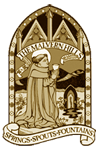
Best wishes, Cora & Bruce
Tel. 01737 213169 email bruce@thespas.co.uk
Tel. 01684 561215 email cora@malvernspa.com
1) TOPOGRAPHICAL LOCATION:
Malvern Hills - arguably Britain's original National Park
3) INFORMATION CATEGORY:
Springs and Wells General InterestHistory & Heritage
Friends Newsletter



